Key takeaways:
- Grassroots movements empower communities to collectively address concerns and drive change, fostering resilience and innovation.
- Community housing enhances social cohesion, economic stability, and strengthens neighborhood connections through collaboration.
- Challenges such as funding, community resistance, and bureaucratic obstacles can hinder grassroots initiatives, necessitating strategic advocacy and education.
- Adaptability, storytelling, and patience are essential traits for successful grassroots organizers, enabling them to build trust and overcome obstacles.
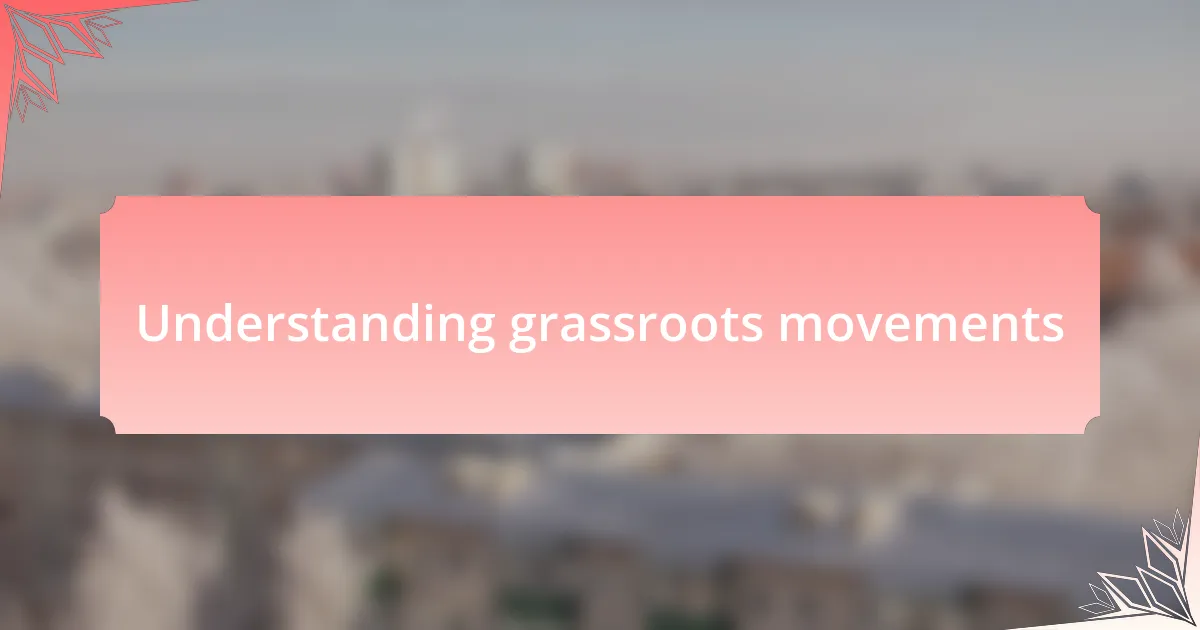
Understanding grassroots movements
Grassroots movements often begin at the local level, typically driven by the community’s shared concerns and aspirations. I remember attending a neighborhood meeting where residents voiced their frustrations about housing shortages. It struck me then how powerful collective voices can be when they unite for a common cause.
What’s fascinating is that grassroots movements aren’t just about expressing discontent; they are a catalyst for change. When I participated in a local organizing effort for better community housing, it made me realize that true transformation starts with people coming together, sharing ideas, and working towards mutual solutions. Have you ever felt that rush of hope when a community bands together, determined to create a better environment for all?
These movements thrive on the passion and dedication of individuals who believe in their cause, often overcoming bureaucratic challenges. I vividly recall a late-night strategy session with neighbors over coffee, brainstorming ways to engage local officials–an experience that showed me the sheer determination and resilience of ordinary people. It’s this spirit, fueled by personal commitment, that sets grassroots movements apart from conventional advocacy.
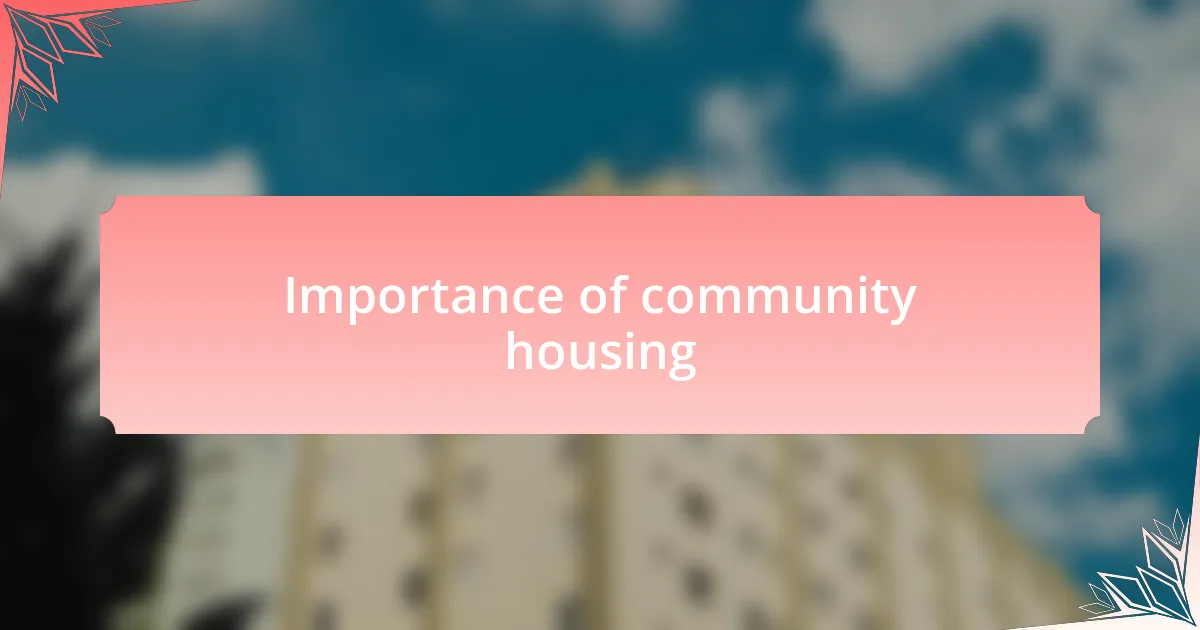
Importance of community housing
Community housing serves as a foundation for stable neighborhoods, providing not just shelter but a sense of belonging. I recall visiting a nonprofit housing initiative that transformed a vacant lot into vibrant homes. The joy and relief on residents’ faces illustrated that when people have access to affordable housing, they thrive.
Moreover, community housing fosters social cohesion by bringing diverse groups together. I remember chatting with my neighbors at a community potluck organized to celebrate our new housing project. That event wasn’t just about food; it ignited friendships and collaboration, reminding me how essential housing is to forming meaningful connections among individuals.
The economic benefits of community housing can’t be overlooked either. A few years ago, I attended a workshop on local development, where experts highlighted how affordable housing can boost local economies by attracting businesses and creating jobs. This made me reflect on how a supportive housing environment not only benefits individuals and families but also uplifts entire neighborhoods, creating a cycle of growth and opportunity.
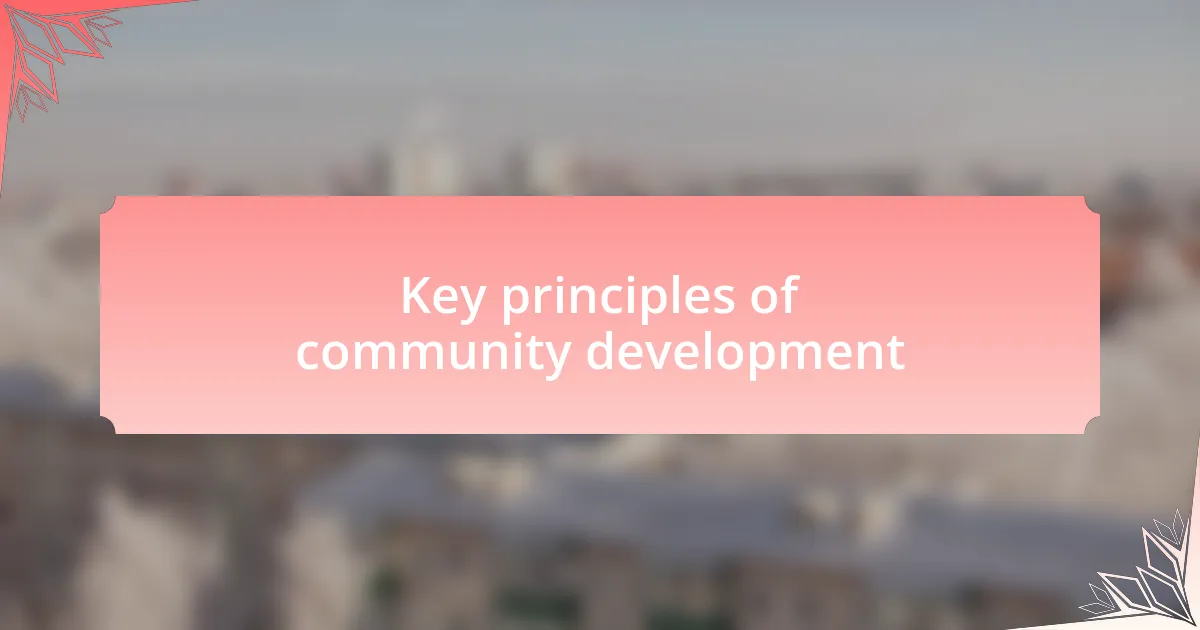
Key principles of community development
One of the key principles of community development is empowerment. I remember working alongside community members to help them express their needs and voice their opinions during a housing forum. It was rewarding to witness their confidence grow as they shared their visions for improvement, reminding me that when individuals feel empowered, they become catalysts for change.
Collaboration is another fundamental principle that stands out in community development. I once participated in a multi-stakeholder meeting, where residents, local businesses, and government representatives came together to brainstorm solutions for common challenges. The synergy created in that room was palpable; it reinforced my belief that diverse perspectives lead to innovative ideas that truly address community needs.
Lastly, sustainability is crucial for long-term success. I think back to a community garden project I volunteered for that not only provided fresh produce but also taught residents about sustainable practices. Seeing families come together to nurture that garden made me question: how can we ensure that our development efforts have lasting impacts? It’s clear that we must prioritize ongoing support and resources to maintain the vibrancy of our communities over time.
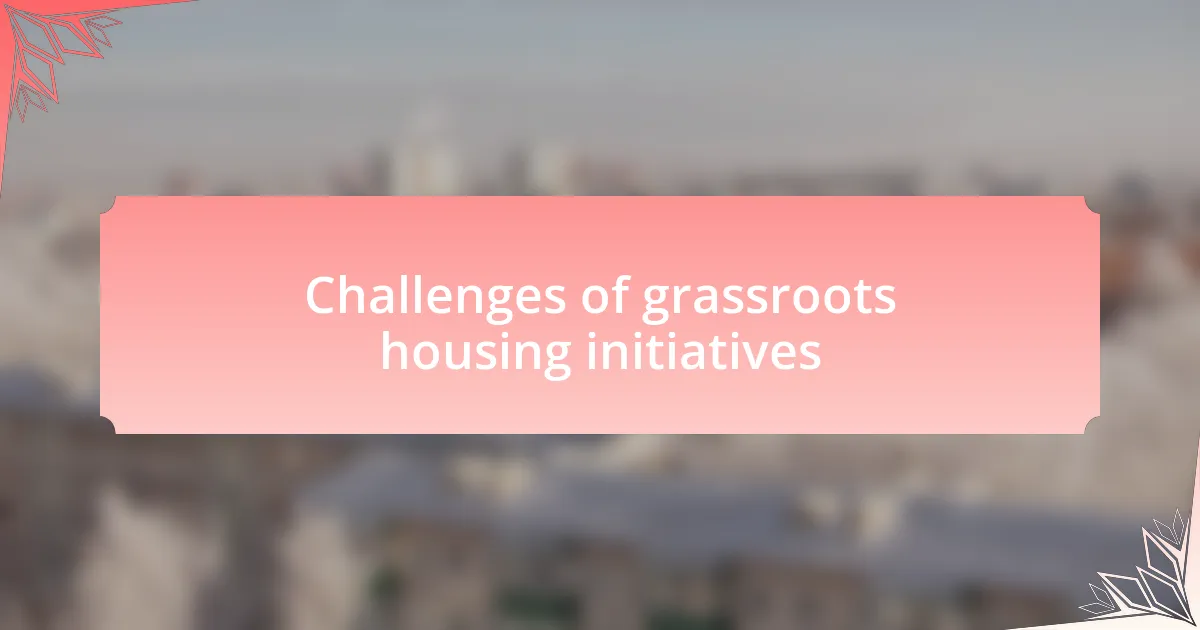
Challenges of grassroots housing initiatives
Grassroots housing initiatives often face significant funding challenges. I’ve been part of several projects where securing financial resources became a daunting task. It made me realize how vital it is to create a robust fundraising strategy; without it, even the best ideas can remain just that—ideas that never see the light of day.
Another hurdle is community resistance. I vividly remember a local initiative that struggled to gain support from some long-term residents. They were apprehensive about change and its implications for their neighborhood. It left me pondering: how can we bridge the gap between progress and preservation? Open dialogues and education about the benefits of housing initiatives are essential to alleviate these fears and foster acceptance.
Finally, the complexity of navigating bureaucratic processes can prove daunting. In one instance, I observed grassroots activists overwhelmed by zoning laws and permitting delays. This made me question the system’s role in facilitating or hindering community efforts. If the goal is to support community-driven solutions, shouldn’t the path be more accessible and clear? We must advocate for reforms that empower local voices rather than stifle them with red tape.
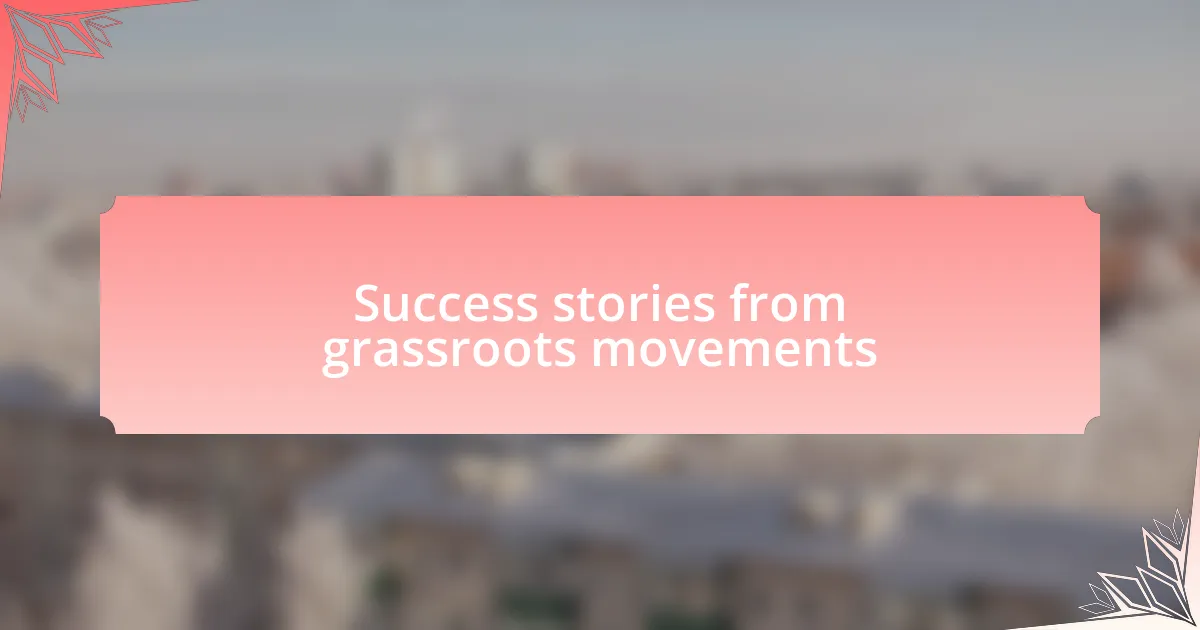
Success stories from grassroots movements
One inspiring success story that sticks with me is from a small town where a group of passionate residents banded together to transform a derelict building into affordable housing. I remember attending their community meetings, where the energy was electric. They not only secured funding through local partnerships but also galvanized support from neighboring residents who saw the potential for revitalization. It made me reflect: what can happen when a community takes ownership of its needs?
In another instance, I witnessed a grassroots movement in an urban area that successfully mobilized to change zoning laws, allowing for the creation of mixed-income housing. The activists faced fierce opposition initially, but their persistence paid off. They organized street fairs, held educational workshops, and invited local officials to speak. This engagement fostered understanding and, ultimately, acceptance. It drives home the point that genuine dialogue can pave the way for collaboration—even in the face of resistance.
Lastly, I recall a community garden project that evolved into a housing initiative after neighbors realized their shared vision. Originally focused on food security, the group’s discussions naturally progressed towards housing solutions when they recognized their shared struggles. Their newfound unity led to the development of accessible housing that reflected community values. Isn’t it fascinating how one project can evolve into another, creating layers of success that empower the entire neighborhood?

Lessons learned from my experience
Throughout my journey with grassroots movements, I’ve learned that adaptability is key. I recall a moment when our initially planned approach fell through due to unforeseen city regulations. Rather than giving up, we pivoted and sought advice from local officials and experts. This lesson emphasized the importance of being flexible and open to change—it’s amazing how new paths can lead to unexpected opportunities.
Another critical insight was the power of storytelling. There was a particular meeting where community members shared their personal housing challenges. I watched as their narratives shifted the tone of the discussion; empathy flourished, and resistance softened. This experience taught me that when people connect on a human level, they become more invested and more willing to collaborate, breaking down barriers that seemed insurmountable.
Lastly, I’ve come to appreciate the significance of patience. I vividly remember organizing a community event that faced backlash from a few residents. Initially, I was disheartened, but I soon realized that change often takes time. By consistently engaging with skeptics and addressing their concerns, I saw transformation—not just in housing policies, but in community dynamics. It made me question: how often do we underestimate the slow but steady process of building trust?